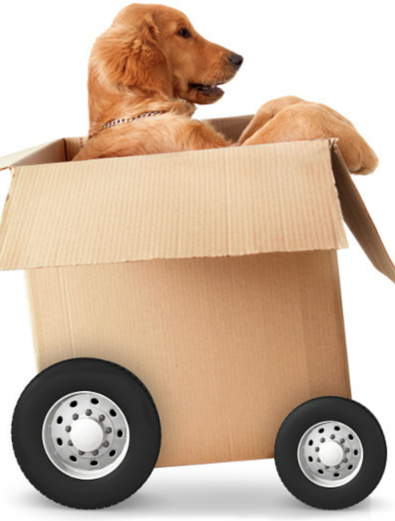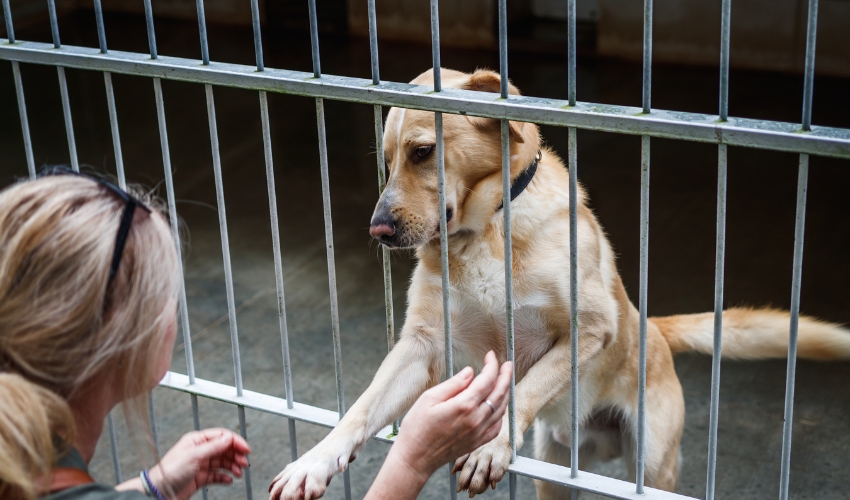Moving a to a new place is hard enough under the best of circumstances. Having a foster dog at home doesn’t have to make the process even more complicated with the right planning, though. When selling a home, there are plenty of proactive steps sellers can undertake to minimize the presence of pets in the home for the buyer, but – unfortunately – a lot of this common advice doesn’t take a dog’s feelings and reactions into consideration, leading to undue stress. Tending to the foster dog’s needs throughout the selling and/or moving process can make the transition easier for everyone.

Packing and Preparation
Many dogs see suitcases or boxes and understand that an absence or a trip will follow. This can be anxiety inducing for many animals. Setting out bags and boxes weeks in advance of beginning to pack can help calm a dog’s nerves. Once the foster dog has begun to see that the boxes and suitcases do not correspond to a trip or an absence, he or she may feel more comfortable throughout the packing process.
Giving reassurance to the foster dog throughout the process can help as well. Foster parents who take extra time to interact with their dog can help their dog feel better about all the packing. In spite of what there is to do to move the household, it is essential to not neglect a foster animal in any way – It’s important to maintain a normal walking schedule (and other routines) throughout the packing and moving process.
Finally, it’s also important for foster parents to spend time preparing their foster dog for their new home. If the new home is smaller, has a smaller yard or is near to homes with many other dogs, the foster dog may need new training to help them acclimate to their new environment.
While You’re Moving
Moving day is often a long day, and helping ensure any anxiety a dog feels is minimized will make the move pleasant for everyone involved. If the dog will tolerate a day spent with a dog sitter, this is often a better choice for them as far as stress is concerned. Most dogs will respond best to dog sitters they already know. If possible, foster parents are encouraged to leave their foster dog with a family friend or relative who already knows the dog and with whom the dog is comfortable.
When leaving a foster dog with a sitter, it’s important to give the sitter some toys, treats and food, and instructions about how and when to give the dog any treats or snacks – keeping in line with the routines foster parents strove to maintain while packing.
Foster parents who do not wish to leave their foster dog with a sitter can instead keep their dog nearby but out of the way throughout the moving process. Coordinating with the movers to ensure they will watch out for the dog is important in this scenario. If you’re able to leave the home while boxes are being moved, consider on taking a few laps around the block until all large objects are in the moving truck or van. Depending on the dog’s personality around strangers, you may want to have a “safe room” for them to nap or play in with a trusted individual or yourself.

Unpacking and Settling In
It’s common for dogs to feel some amount of stress throughout the unpacking and settling in process. Spending extra time together and going on frequent walks can help alleviate some of these feelings.
Foster parents are encouraged to keep the first incidents of separation after the move short. This helps the foster dog to understand that separations are not permanent. This is a good time to explore the neighborhood. Going for walks burns off energy and can help the foster dog to explore his or her new surroundings.
Saying hi to neighbors during these walks can help reassure the dog that the neighbors are safe and are not to be feared. It’s also important to spend time playing games in the yard, to help the foster dog to become more acquainted with the normal surroundings. If you’re a parent of a foster dog and you plan to move soon, start working with your dog as soon as possible to ensure that the move is smooth and the transition is easy.











